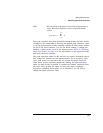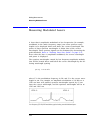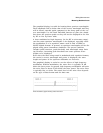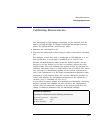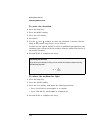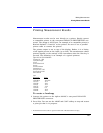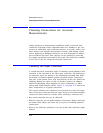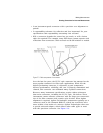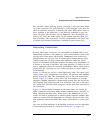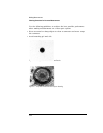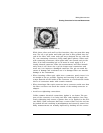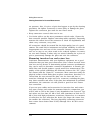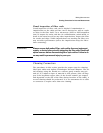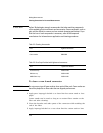
2-41
Making Measurements
Cleaning Connections for Accurate Measurements
• Is an instrument-grade connector with a precision core alignment re-
quired?
• Is repeatability tolerance for reflection and loss important? Do your
specifications take repeatability uncertainty into account?
• Will a connector degrade the return loss too much, or will a fusion
splice be required? For example, many DFB lasers cannot operate with
reflections from connectors. Often as much as 90 dB isolation is needed.
Figure 2-3. Basic components of a connector.
Over the last few years, the FC/PC style connector has emerged as the
most popular connector for fiber-optic applications. While not the
highest performing connector, it represents a good compromise
between performance, reliability, and cost. If properly maintained and
cleaned, this connector can withstand many repeated connections.
However, many instrument specifications require tighter tolerances
than most connectors, including the FC/PC style, can deliver. These
instruments cannot tolerate connectors with the large non-concentrici-
ties of the fiber common with ceramic style ferrules. When tighter
alignment is required, Agilent Technologies instruments typically use a
connector such as the Diamond HMS-10, which has concentric toler-
ances within a few tenths of a micron. Agilent Technologies then uses
a special universal adapter, which allows other cable types to mate
with this precision connector. See Figure 2-4.



